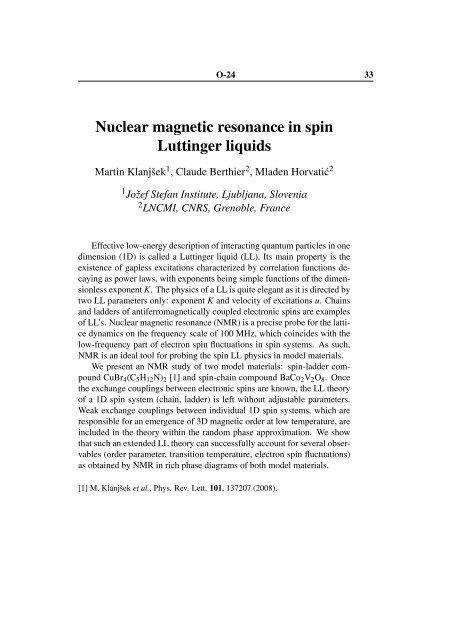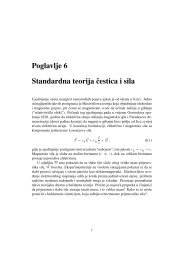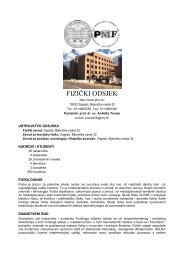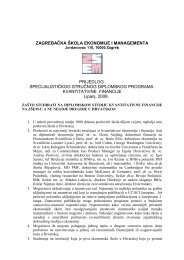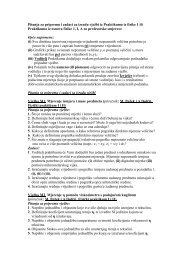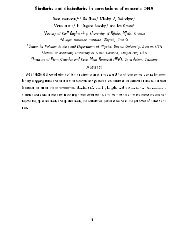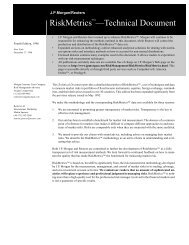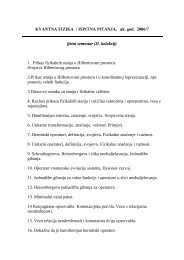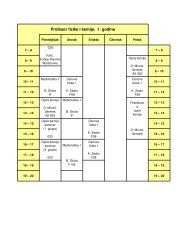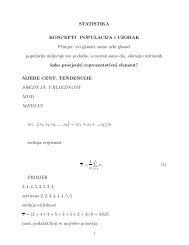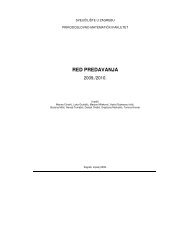Abstract book - phy
Abstract book - phy
Abstract book - phy
Create successful ePaper yourself
Turn your PDF publications into a flip-book with our unique Google optimized e-Paper software.
O-24 33<br />
Nuclear magnetic resonance in spin<br />
Luttinger liquids<br />
Martin Klanjšek 1 , Claude Berthier 2 , Mladen Horvatić 2<br />
1 Jožef Stefan Institute, Ljubljana, Slovenia<br />
2 LNCMI, CNRS, Grenoble, France<br />
Effective low-energy description of interacting quantum particles in one<br />
dimension (1D) is called a Luttinger liquid (LL). Its main property is the<br />
existence of gapless excitations characterized by correlation functions decaying<br />
as power laws, with exponents being simple functions of the dimensionless<br />
exponent K. The <strong>phy</strong>sics of a LL is quite elegant as it is directed by<br />
two LL parameters only: exponent K and velocity of excitations u. Chains<br />
and ladders of antiferromagnetically coupled electronic spins are examples<br />
of LL’s. Nuclear magnetic resonance (NMR) is a precise probe for the lattice<br />
dynamics on the frequency scale of 100 MHz, which coincides with the<br />
low-frequency part of electron spin fluctuations in spin systems. As such,<br />
NMR is an ideal tool for probing the spin LL <strong>phy</strong>sics in model materials.<br />
We present an NMR study of two model materials: spin-ladder compound<br />
CuBr 4 (C 5 H 12 N) 2 [1] and spin-chain compound BaCo 2 V 2 O 8 . Once<br />
the exchange couplings between electronic spins are known, the LL theory<br />
of a 1D spin system (chain, ladder) is left without adjustable parameters.<br />
Weak exchange couplings between individual 1D spin systems, which are<br />
responsible for an emergence of 3D magnetic order at low temperature, are<br />
included in the theory within the random phase approximation. We show<br />
that such an extended LL theory can successfully account for several observables<br />
(order parameter, transition temperature, electron spin fluctuations)<br />
as obtained by NMR in rich phase diagrams of both model materials.<br />
[1] M. Klanjšek et al., Phys. Rev. Lett. 101, 137207 (2008).


